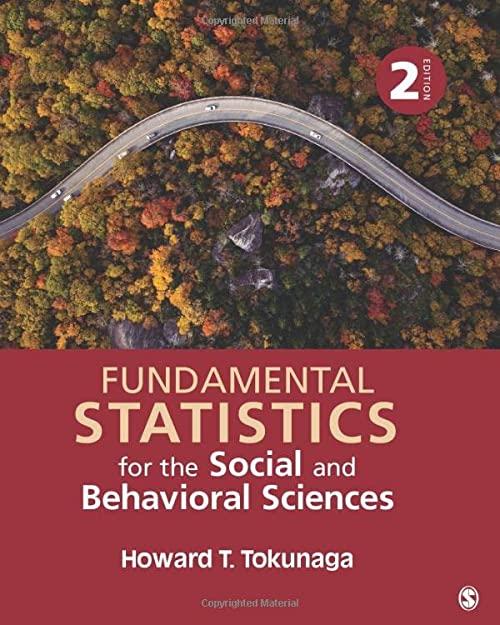Below are two hypothetical situations: Study A: (N_{1}=20, bar{X}_{1}=14.50, s_{1}=2.50) (N_{2}=20, bar{X}_{2}=12.75, s_{2}=3.25) Study B: (N_{1}=65, bar{X}_{1}=14.50,
Question:
Below are two hypothetical situations:
Study A: \(N_{1}=20, \bar{X}_{1}=14.50, s_{1}=2.50\)
\(N_{2}=20, \bar{X}_{2}=12.75, s_{2}=3.25\)
Study B: \(N_{1}=65, \bar{X}_{1}=14.50, s_{1}=2.50\)
\(N_{2}=65, \bar{X}_{2}=12.75, s_{2}=3.25\)
a. Calculate the standard error of the difference \(\left(s_{\bar{X}_{1}}-\bar{X}_{2}\right)\) and the \(t\)-test for independent means for each study.
b. How does increasing the sample size from \(N_{i}=20\) to \(N_{i}=65\) affect the calculated values of the standard error of the difference and the \(t\)-statistic?
c. How does increasing the sample size affect the probability of making a Type II error?
Fantastic news! We've Found the answer you've been seeking!
Step by Step Answer:
Related Book For 

Fundamental Statistics For The Social And Behavioral Sciences
ISBN: 9781506377476
2nd Edition
Authors: Howard T Tokunaga
Question Posted:





